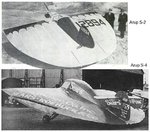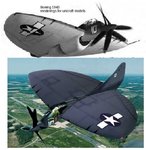For those who might not have heard the term: Foo fighter - Wikipedia, the free encyclopedia
Anyway, if anyone has a plausible theory as to what they were, it's going to be someone on WW2Aircraft.net.
They were seen in all theatres of the war, but not so much in Korea, and rarely if ever today. So what were they?
Bronc
Anyway, if anyone has a plausible theory as to what they were, it's going to be someone on WW2Aircraft.net.
They were seen in all theatres of the war, but not so much in Korea, and rarely if ever today. So what were they?
Bronc



